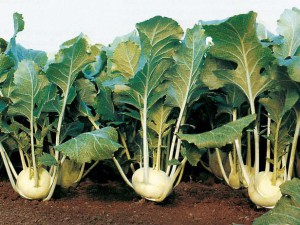Project Report For Kohlrabi Farming
Introduction
Project report for Kohlrabi Farming is as follows.
Kohlrabi is a cruciferous vegetable that is closely related to broccoli, cauliflower, and cabbage. It is a popular vegetable in India, where it is grown for its bulbous stem, which is edible and has a mild, sweet flavor. Kohlrabi is a hardy vegetable and can be grown in a variety of climates, but it prefers cooler temperatures. In India, it is mainly grown in the northern and northeastern regions, particularly in the states of Himachal Pradesh, Uttarakhand, and Sikkim.
It can also be grown in the hill regions of Jammu and Kashmir, and in the high-altitude areas of other states. The crop is easy to grow and requires well-drained, fertile soil with a pH range of 6.0-7.5. Kohlrabi prefers a cool climate and can be planted in the winter season. The seeds are sown in beds or raised seedbeds, and the seedlings are transplanted after about 3-4 weeks. The crop requires regular irrigation and fertilization for optimal growth.

The planting season for kohlrabi in India typically begins in the months of October and November, and the harvest season begins in February and lasts until May. The crop can be grown in both rain-fed and irrigated conditions, but it requires a consistent supply of moisture to ensure a good yield. Kohlrabi is a relatively low-maintenance crop, but it does require some care to ensure a good yield.
Proper land preparation is crucial, as the soil should be well-drained and fertile. The seedlings should be transplanted into the fields at the appropriate time, and the crop should be spaced at the correct distance to allow for proper growth and development.
Project Report Sample On
Kohlrabi Farming
Get Completely Custom Bankable Project Report
Kohlrabi is also susceptible to pests and diseases, such as aphids, whiteflies, and clubroot. To control these pests and diseases, farmers can use pesticides and fungicides. However, it is important to use these chemicals in moderation, as overuse can lead to resistance to pests and can also be harmful to the environment.
In India, kohlrabi is mainly used for local consumption and is not exported on a large scale. It is mainly sold in local markets and in supermarkets. The price of kohlrabi varies depending on the season and the location, but it is generally considered to be a relatively inexpensive vegetable.
Market Potential Of Kohlrabi Farming
In terms of market potential, kohlrabi is still a niche crop in India and is not widely cultivated or consumed. However, as awareness of its health benefits and culinary uses increases, there may be potential for growth in the market. Kohlrabi is a good source of vitamins C and K, as well as potassium and fiber.
It can be eaten raw or cooked and can be used in a variety of dishes such as salads, soups, and stir-fries. The demand for kohlrabi is likely to increase as more people become aware of its health benefits.
Additionally, as the Indian population continues to grow and urbanize, there may be greater demand for diverse and nutritious food options. This could create opportunities for kohlrabi farmers to sell their crops to supermarkets, restaurants, and other food outlets. Another factor that may contribute to the market potential of kohlrabi farming in India is the government’s focus on promoting horticultural crops.
The government has implemented various schemes and initiatives to support horticultural crop cultivation, including providing financial assistance to farmers for the purchase of seeds, fertilizers, and other inputs.
This support can help farmers to overcome some of the challenges associated with growing kohlrabi, such as high input costs and lack of information on cultivation techniques. Overall, the market potential for kohlrabi farming in India is promising but still in the early stages.
The increasing awareness about health benefits and government support for horticultural crop cultivation could drive demand. However, there are also challenges that need to be addressed, such as lack of awareness and competition from other vegetable crops.
